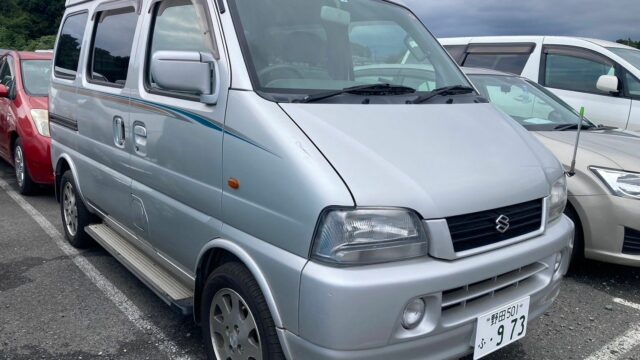My role as a broker is never dull; each day brings interesting new problems to solve, most of which involves me sitting in front of a screen for hours on end. So it’s little wonder that I relish the opportunity to take customers’ cars to complete the registration process in South Australia where possible. The cheapest way to do this, of course, is to throw a trade plate on the back of the car and drive the 10km journey each way. It involves me taking time out of my day, but I do it for free, which saves customers a lot of money and is good for preventing me going stir crazy in the office.
Having spent many years on an all-Japanese diet, the switch to helping UK clients with their cars means my automotive horizons have been somewhat broadened. My most recent client brought his gorgeous 1976 Porsche 911 Carrera 3.0 with him from the UK, and I was naturally given the task of taking it for its ID inspection ready for rego. It had been quite some time in between drinks since my last Porsche experience, so I was effectively approaching the drive with fresh eyes.
The first thing you notice is that no task associated with driving a classic Porsche is completed without consideration or fanfare. Starting the car is an event in itself; the engine barking to life via the very short exhaust system, settling into an off-beat idle as it heats up. The unassisted steering feels go-kart-direct once on the move, and the unassisted brakes only work best once up to temperature and given a sizeable squeeze to match the ability of the modern car in front. But for those accustomed to the remote nature of driving modern-day rep-mobiles, the tactility of the experience is incredible.
The 3.0 litre flat six, effectively a non-turbo version of the original 930, is a peach, developing some reasonable oomph once the needle swings past 3500rpm. It only had 150kW, which might seem laughable by today’s standards, but bear in mind the car itself barely weighed 900kg. I was hardly going to be approaching the car’s limits in city traffic, but the ability to point and squirt it into gaps when needed was a lot of fun, no doubt helped by other generous drivers giving the thumbs up whilst enjoying the symphony from the back of the car.
It’s also worth noting that classic cars (both exotic and mundane) require plenty of love, and while this fully-restored example completed most tasks with flair, it wasn’t without its flaws. It took a while for me to accommodate its gearbox idiosyncrasies, most notably neutral’s position being closer to the 1-2 gate rather than 3-4. Failure to push the lever across when changing up to third could well have been an exceptionally expensive error. There were a variety of engine-related smells (“is that gearbox oil burning?”) that became less stressful once it was clear they weren’t signalling an impending meltdown. The indicators would occasionally become hazard lights for a blink or two.
But with the crisp winter air providing a few extra horses and the sun streaming in through the windscreen, I have to admit I fell in love with both the experience and the car.
The problem was, it also led to one of the most bizarre experiences I’ve had in the roughly 15 years I’ve been doing my job. Having duly arrived at the inspection station to get the first part of the registration completed, I went through the process of opening bonnet and boot and providing paperwork for the inspector, same as I’d done many times before. One slight problem: the car, as part of the restoration process back in the UK, had received a new block, so the restorers, in their infinite wisdom, had opted to deface the engine number and stamp on the number the car had originally been given for registration. Showing a complete lack of criminal-mindedness, I presumed it wouldn’t be an issue, given that the owner in the UK would be the owner in Australia, and that the new numbers on the block matched the numbers on the paperwork.
Of course, from TransportSA’s point of view, the owner could have imported the shell, stolen a motor locally and then changed the numbers to fit to his car. This obviously wasn’t true, but no amount of begging or pleading my case was likely to convince them otherwise. The inspectors, all of whom now know me by name, put on their serious faces, asked for my driver’s licence and took me away to the interview room. The result? The car was seized, and taken away for forensic testing by SA police. While I was fairly non-plussed at the time – ultimately, I hadn’t broken the law, and neither had the owner – I walked out the street and realised that I had to make the call to the owner to let him know what was going on, and that I had no way of getting home!
Thankfully the owner was fairly understanding about why things had transpired the way they did. As I told him, in the obvious absence of anything incriminating, the car will be returned to him in a month or two once forensics has done their job. Annoying, but it will be registered in the end.
(Update: he got it back, nearly three months later!)
First published in ‘High Performance Imports’ magazine, July 2014.


